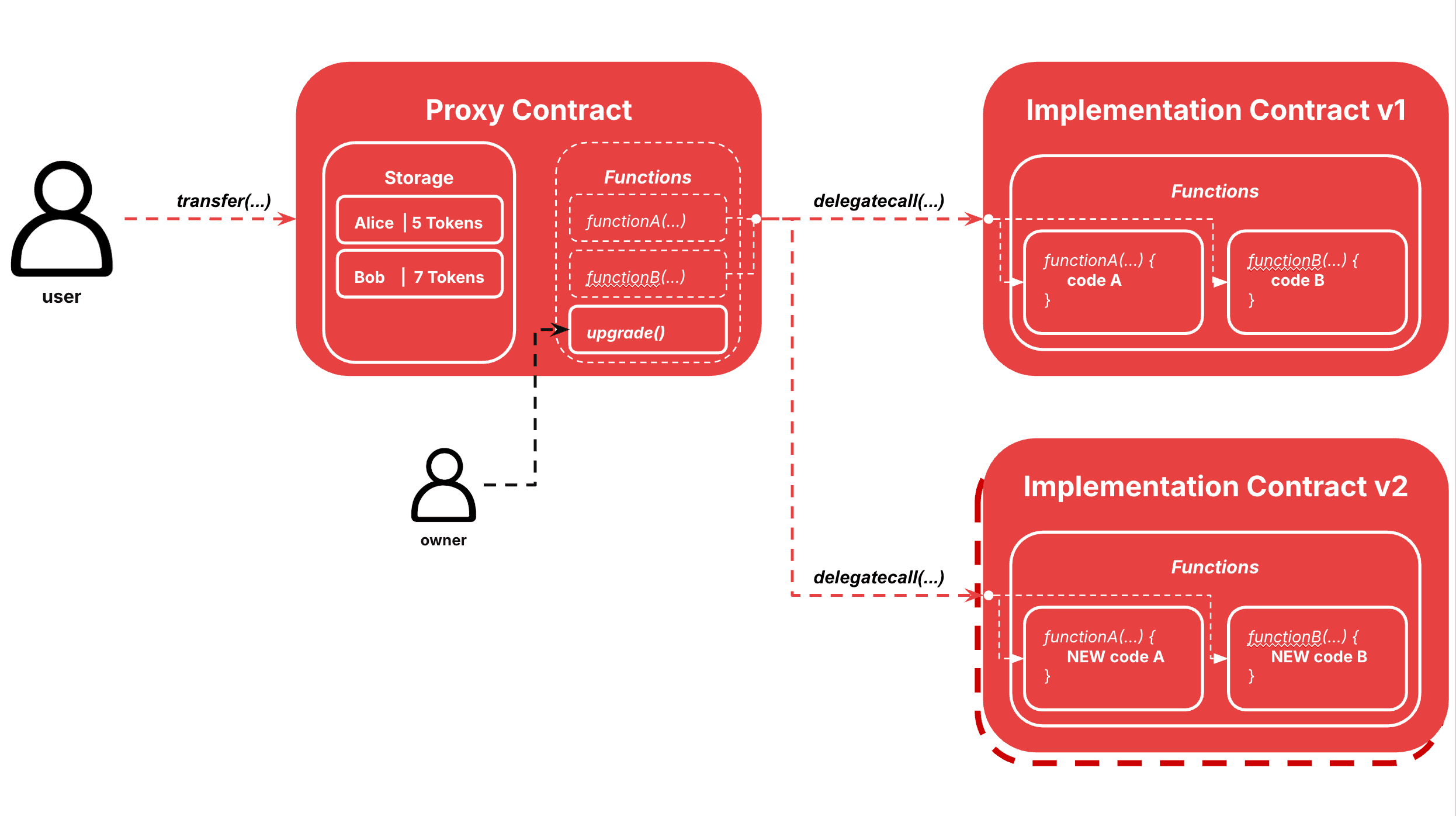Proxy Patterns
Understanding proxy patterns in blockchain - their importance, advantages, and risks.
In blockchain development smart contracts are immutable by design, this can be beneficial for users to trust the software they are using will not be altered, but can represent challenges for developers to improve existing software or fix bugs.
Proxy patterns offer a solution to this dilemma by separating contract logic from data storage, enabling upgrades while maintaining the same contract address.
How Proxy Patterns Work
At its core, a proxy pattern involves two main components:
- Proxy Contract: Holds the permanent address and stores all contract state
- Implementation Contract: Contains the actual business logic that can be upgraded
When users interact with the proxy contract, it delegates all calls to the implementation contract using the delegatecall opcode, executing the implementation's code in the proxy's storage context.
When the owner/admin of the proxy wants to upgrade

Common Proxy Patterns
1. Transparent Proxy Pattern
The Transparent Proxy pattern, developed by OpenZeppelin, ensures clear separation between admin and user interactions:
- Admin calls are handled by the proxy itself
- User calls are delegated to the implementation
- Prevents function selector clashes between proxy and implementation
2. UUPS (Universal Upgradeable Proxy Standard)
UUPS moves the upgrade logic to the implementation contract itself:
- More gas-efficient than transparent proxies
- Implementation controls its own upgradeability
- Requires careful implementation to avoid locking upgrades
3. Beacon Proxy Pattern
Beacon proxies enable multiple proxy instances to share the same implementation:
- All proxies point to a single beacon contract
- Beacon contract holds the implementation address
- Upgrading the beacon updates all proxy instances simultaneously
Advantages of Proxy Patterns
- Upgradability Without Address Changes - Users and integrations can continue using the same contract address even after upgrades, preserving user interfaces, exchange listings, and historical transaction references.
- Bug Fixes and Security Patches - Critical vulnerabilities can be addressed without requiring users to migrate to a new contract, enabling rapid response to security incidents with minimal disruption.
- Feature Addition and Optimization - New functionality can be added over time including gas optimization improvements, new features based on user feedback, and integration with newer protocols.
Risks and Considerations
- Centralization Risk - Upgrade capabilities rest with a single admin or small group, creating a single point of failure and potential for malicious upgrades.
- Function Selector Clashes - Proxy and implementation functions can have matching selectors, causing unexpected behavior, security vulnerabilities, and upgrade failures.
- Complexity - Proxy patterns add complexity through additional gas costs for delegatecall operations and make contracts harder to audit and verify.
Is this guide helpful?


